Welcome to Moda Fabrics!
It always comes back to weight...
It always comes back to weight...
Have you ever been somewhere and had a young man holler "we've got weight issues over here..." - while looking at you?
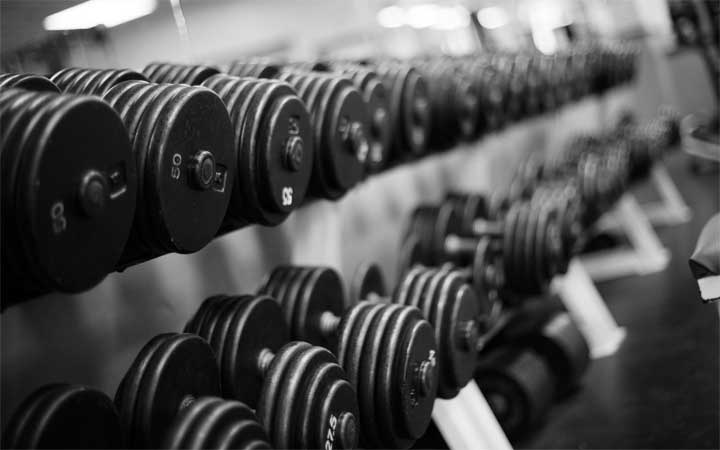
It happened to me. May 2008. I was at the airport and the young man in question was checking baggage curbside. I was on the way to Quilt Market in Portland so of course my bags were overweight! It was kind of funny after I realized he didn't mean me.
Fortunately, today we're chatting about thread weight - what the numbers mean and why it's great to have so many options.
Thread weight. Do you know how thread weight is measured? Our most common weight system does not correspond to thread diameter or some measurement of thickness. It relates to the length of the thread in kilometers required to weigh 1 kilogram - the longer the length of thread needed to reach that weight, the finer the thread. So the higher the number, the thinner the thread.
Have you ever seen one of these Aurifil Sampler Thread Packs? They're often used as promotional items - especially when Alex Veronelli is doing a presentation about Aurifil. (If you ever get the chance to attend one of his chats - I highly recommend it.)
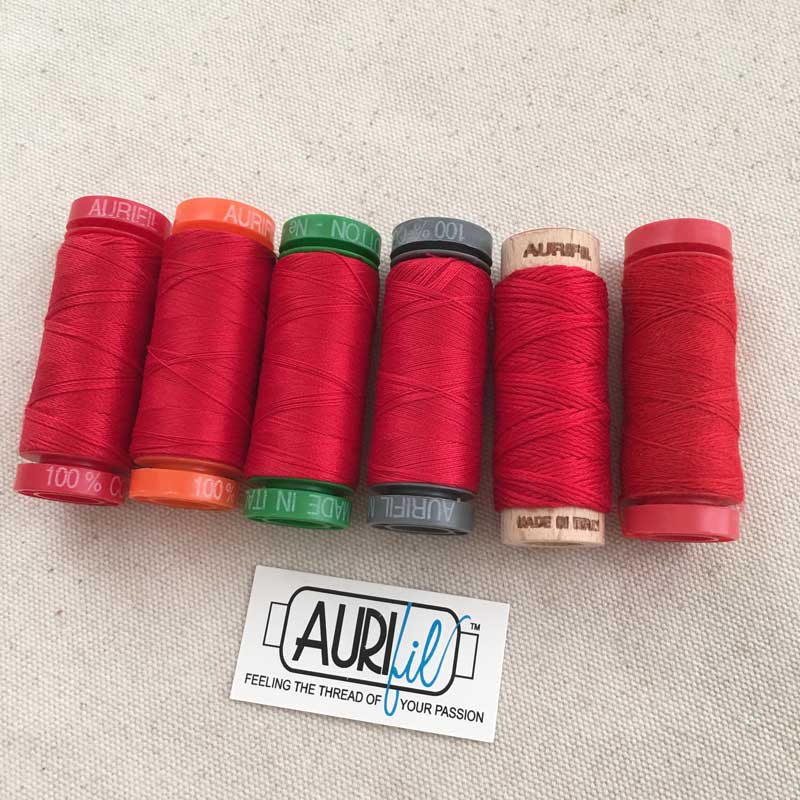
It includes one spool of each weight of Aurifil thread - from left to right -
- Red Spool - Mako 12 wt. Works beautifully for decorative quilting, embroidery, hand-appliqué with a buttonhole stitch, sashiko and big-stitch hand-quilting.
- Orange Spool - Mako 50 wt. Best for fine, detailed machine-quilting, hand- and machine-piecing, hand- and machine-appliqué, garment sewing, machine-embroidery and stitching binding.
- Green Spool - Mako 40 wt. Well-suited for hand-and machine-piecing, machine quilting - domestic and long=arm machines, machine-appliqué and machine-embroidery.
- Gray Spool - Mako 28 wt. Works for hand- and machine-quilting, hand- and machine-embroidery, and hand- and machine-appliqué.
- Wooden Spool - Aurifil Floss or Aurifloss - a 6-ply stranded embroidery floss for embroidery, cross-stitch, needlepoint and appliqué.
- Other Red Spool - Lana Wool Thread. Embroidery, hand- and machine-appliqué.
What does "mako" mean? It's a specific type of Egyptian long-staple cotton fiber.
And why is this all interesting or important to know? All those different weights of thread mean options.
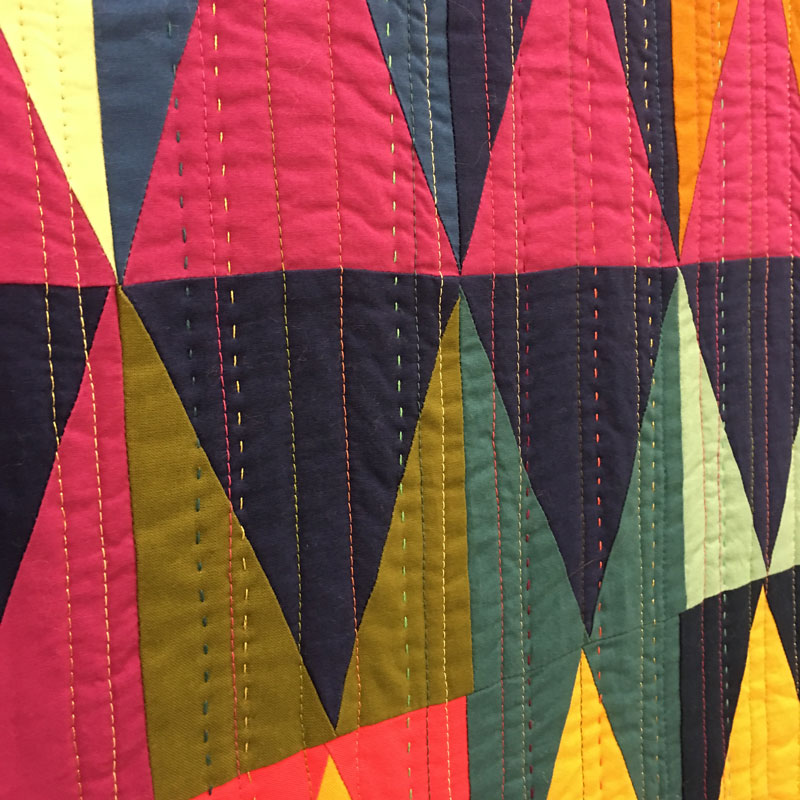
Diamonds Quilt #2 by Tara Faughnan - from QuiltCon West this past February.
This is a very simple - rough - example of how the four weights of cotton Mako from the Sampler Pack look when quilted.
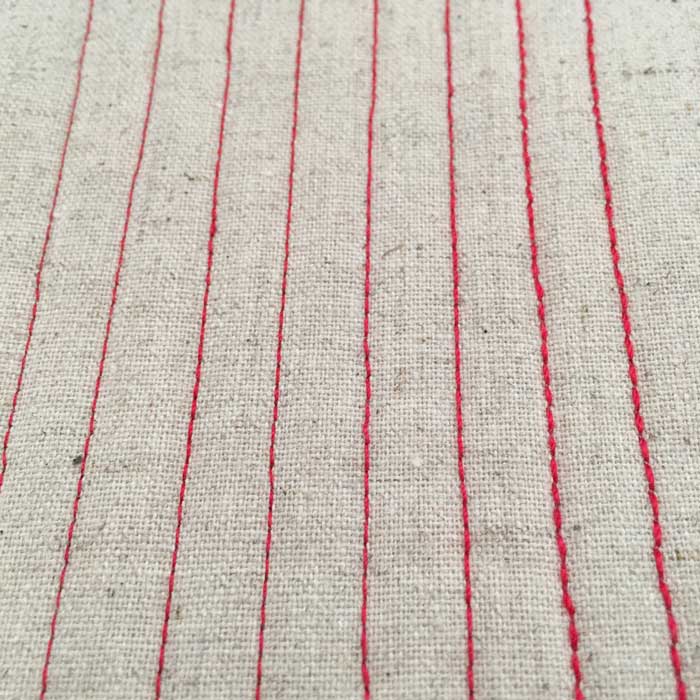
There are two lines of stitching for each weight starting with Mako 50 wt. on the left. Mako 50 wt. - Mako 40 wt. - Mako 28 wt. - Mako 12 wt.
*I highly recommend not making this kind of sample in a rush... on a 70-year old sewing machine... on a linen-blend fabric. Just saying.
Still... it does show how very different the thread looks, how you can give definition to what you're stitching based on the thread weight.
Needles. You will need to change the needle size based on the thread size. While machine-piecing with 50 wt. thread can be done with a needle as small as 70/10 or 75/11, machine-quilting with 50 wt. is best done with an 80/12, preferably a Microtex (Sharp) needle. The 80/12 will work for both the 50 wt. and 40 wt. thread. A 90/14 needle is best for the 28 wt. thread. For the 12 wt. thread, a 90/14 top-stitch needle is recommended - not the Universal needle I had on hand. Also, for the 12 wt. thread, stitch slowly.
Why a Microtex? Universal needles have a slightly rounded point while Microtex needles have a sharp or "acute" point that penetrates the layers of fabric and batting better. (My very old machine doesn't like Microtex needles... hence the not perfectly. straight. lines. of stitching.)
Tension. If you're not comfortable adjusting the tension on your sewing machine - either on the top or for the bobbin - your results may vary.
Bobbin Thread. For the 50 wt. and 40 wt. threads, the same weight thread can be used in the bobbin for machine-quilting. With the 28 wt. and 12 wt. threads, a 50 wt. thread in the bobbin is recommended.
Stitch Length. The heavier the thread, the longer the stitch length should be.
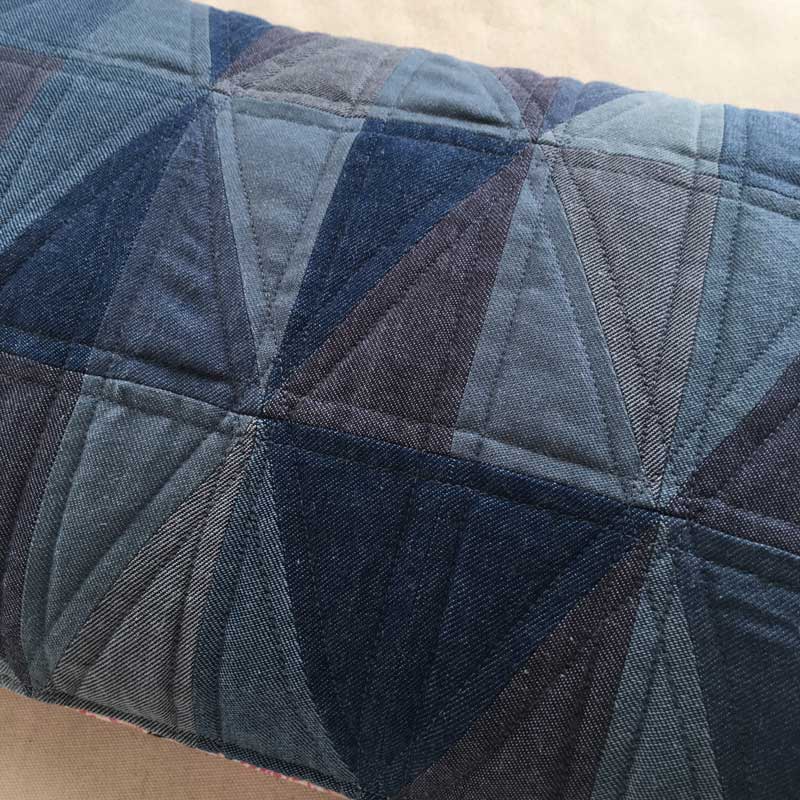
For this Denim Fabric from Moda, I used a 28 wt. thread because I wanted the stitching to show a little more in the same way it does on jeans.
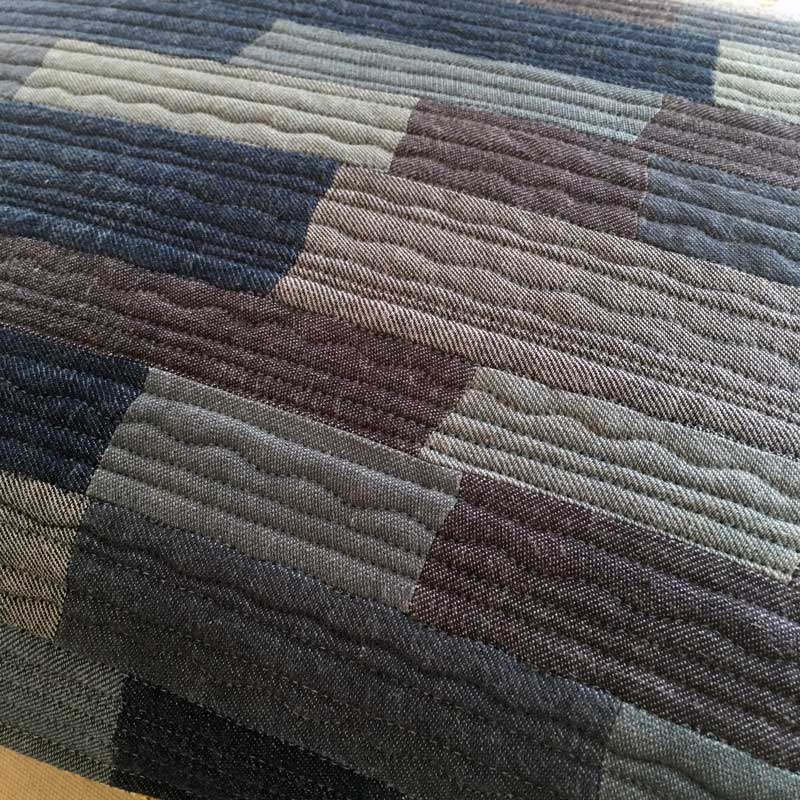
This uses a combination of 40 wt. and 28 wt. threads in several shades of blue. (Yes, I was playing around with random lines of stitching.)
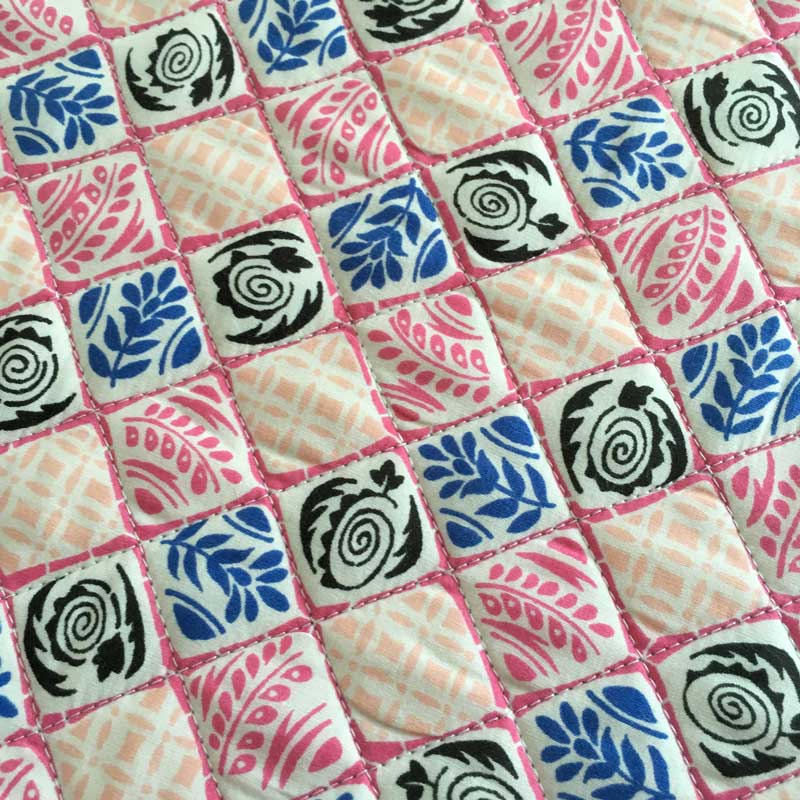
For this cotton lawn fabric - Jen Kingwell's Moving On Lawns - I used a 50 wt. thread. Anything heavier would have been more obvious on the light weight, higher thread-count and fine threads of the lawn.
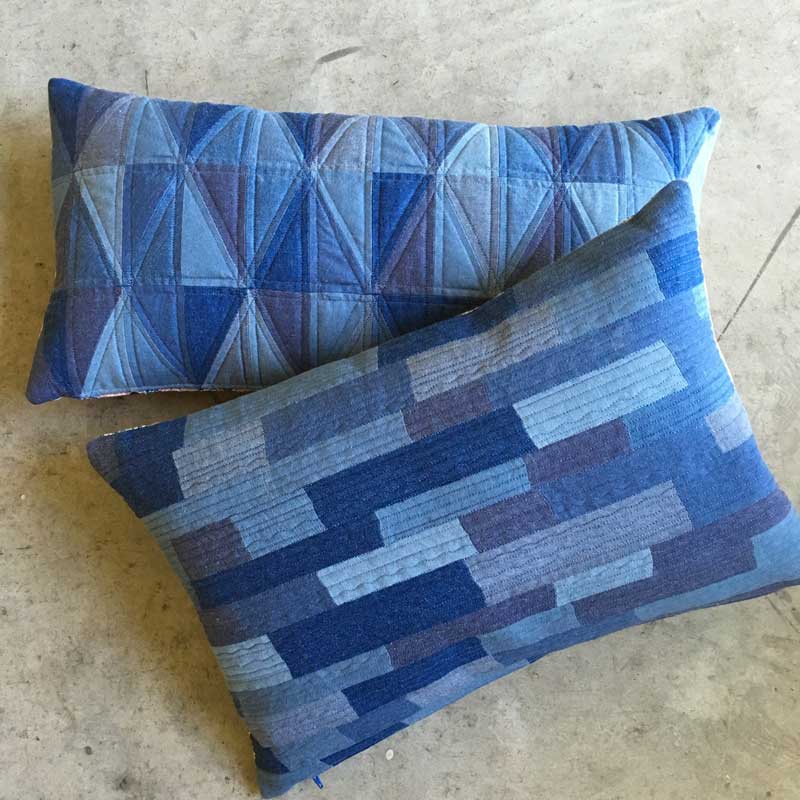
As you can see at the very bottom of the picture, I like the finish of a zipper on a pillow.
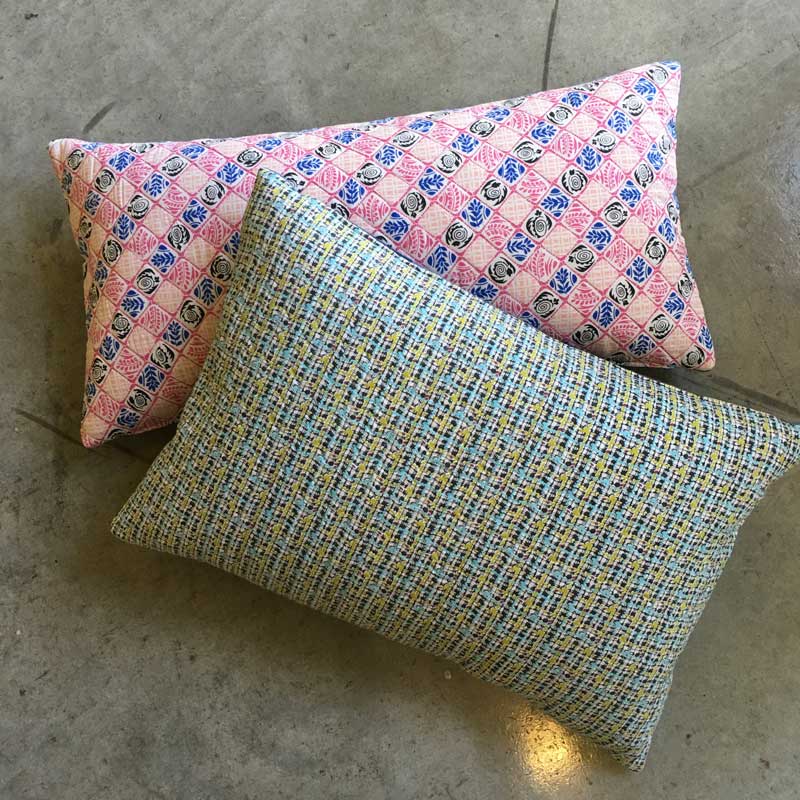
I also like something different on the back of the pillow - and yes, I do like quilting the fabric on the back of the pillow if the front is quilted.
There are two last things to mention about threads. There are lots of terrific threads available on the market - different weights, fibers, finishes, colors and textures, etc. I happen to like Aurifil. I was trying to think of when I started using it and it might be almost twenty years ago - The Quilted Apple Bernina in Phoenix when Val told me I needed to try this terrific new thread from Italy. Today, there are more colors, weights, and spool sizes available and that makes me very happy. For everything you ever wanted and needed to know about Aurifil thread, the best source is Aurifil. The website also has some terrific "How To Use" videos for their threads and the various uses.
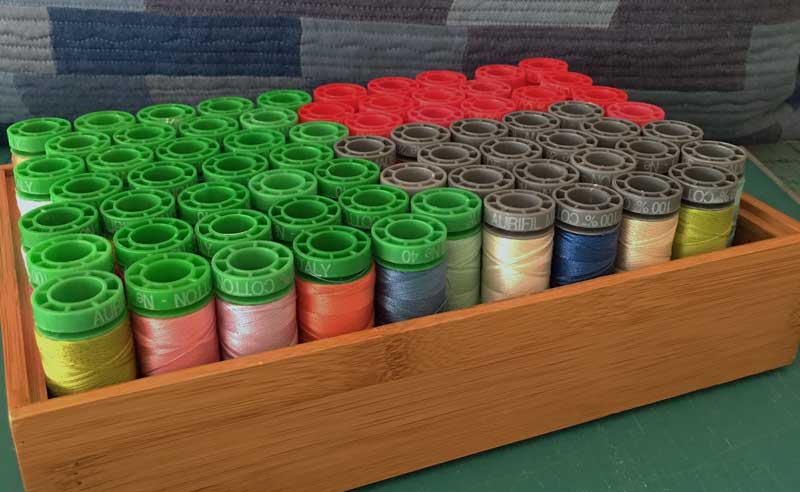
But be very, very afraid.
Once you start playing with the different thread weights, it's hard to stop "collecting" them. There are only a few Aurifil designer thread sets available in 40 wt. but I've found that it's a good place to start. I also prefer buying the small spools since this really is about playing around and experimenting. The majority of sewing I do can be done with three colors - a slightly mucky, golden tan (2324), off-white (2024) and a pale silver-gray (2600). On the very rare occasion that I need a color, I'll know if I need a large spool. Since thread doesn't last forever - even really good quality thread - I prefer the small spools. (The meters of thread on this size spool varies by weight.)
We leave for Quilt Market in Salt Lake City a week from today and with the crates Moda ships, I don't worry about "weight issues" anymore... at least not the suitcase kind.
Happy Tuesday!

Comments